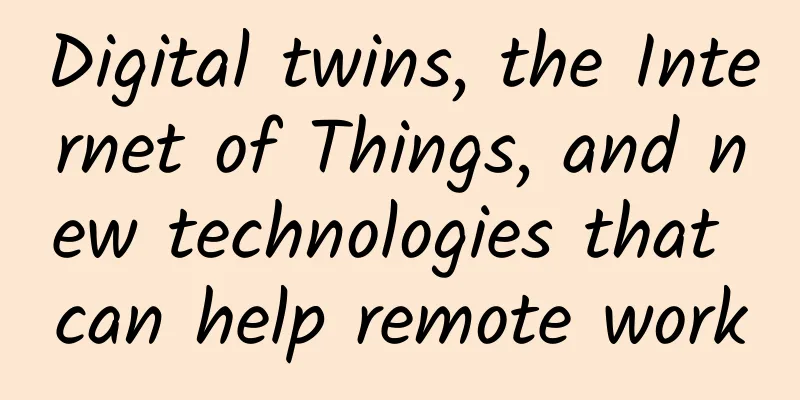Microcables – an excellent solution for denser and faster fiber deployments

|
The telecommunications industry is undergoing a major shift in technology and capital expenditures. The telecommunications industry is evolving at an astonishing pace. As technology continues to become a part of our daily lives, its capabilities are also rapidly evolving. Today, the fifth generation of wireless cellular connectivity is within reach, heralding the dawn of a new technological era. As demand for digital services surges, companies such as Amazon, Microsoft, and Google are installing massive data centers that are scalable, efficient, secure, and equipped with state-of-the-art technology. At the same time, the rapid development of the Internet of Things shows no signs of slowing down as more and more companies embrace it. In addition, the rapidly growing demand for virtualization is pushing software for disruptive networks into the public spotlight. The demand for optical fiber continues to growFiber optic systems transmit sound, data, and media over distances ranging from meters to kilometers at extremely high speeds through thin, transparent fiber bundles. Currently, the technology has been widely used in telecommunications, medical, environmental monitoring, defense, and radio signal transmission. In 2019, the global fiber optic cable market was valued at $75,781 million, and is expected to reach $16,390.6 million by 2025, growing at a CAGR of 14%. The key factor driving this market is the growing demand for Internet services. The digitally savvy population is in urgent need of high-bandwidth communication and data transmission services. In terms of bandwidth, optical fiber is stronger than any other existing technology. As a result, the deployment of fiber optic cables has exceeded the world economic growth rate by more than five times. The deployment time has also been significantly shortened. It used to take 38 years to deploy 1 billion kilometers of optical cable, but now it takes less than two years. In a blessing in disguise, the COVID-19 pandemic has accelerated the need for fiber. With more than 1.2 billion children out of the classroom, e-learning has come of age, and with it the incredible rise of digital platforms like Zoom, Google Classroom, Meet, and many more. Whether studying or working from home, everyone needs uninterrupted, high-quality connectivity. During the lockdown, online browsing doubled, with streaming services like Netflix registering 16 million new users. All of this has had a cumulative effect on data demand, seemingly requiring nearly 10 times the fiber deployment and 3 times the speed. Micro cable technologyHigh-speed networks connect the world every day. When it comes to speed and bandwidth, microcables offer exceptional reliability, performance, and investment value. Microcable is a miniaturized loose tube cable that is 70% lighter and 50% smaller than a standard loose tube cable. However, the miniaturization does not compromise performance. In addition, the reduced buffer tube diameter allows for a higher fiber density per cable. For added protection, it is recommended that microcables be deployed only in microducts. The main features of micro cables are:
Benefits of Microcables The higher fiber density of microcables results in higher efficiency. Microcables are lighter and smaller, which makes the shipping reels easy to move. Cable handling is improved because a smaller crew can be responsible for installation. In summary, the benefits of microcables are as follows:
How can we build denser networks faster?Microcables are denser and can accommodate four times more optical fibers. The diameter of the traditional 72F conduit is 20mm to 25mm, while the diameter of the 288F next-generation microcable with optimized conduit space is only 10mm to 12mm. Deploying microcables in cities is challenging, and this is where micro-trenching technology shines. Micro-trenching is a time-saving and less invasive underground conduit installation method. It is particularly suitable for compact areas such as roads, curbs, sidewalks or under concrete blocks. In addition, the existing conduit space can be expanded for better installation capacity. To increase reliability and reduce the risk of service continuity, multi-way pipes can be used to isolate services. In addition, the use of the blowing method can achieve faster installation. Compared with the traditional pulling method, it improves installation efficiency and saves manpower and installation time. However, this specialized equipment requires correct operation and knowledgeable personnel. In addition, long splicing times can also affect deployment plans. Blow and pull installationIn the pull method, the microcable is attached to a pre-installed tape and then mechanically or manually pulled from the other end. Due to the friction of the microcable as it moves through the conduit, potential cable damage can occur. Pulled fiber is generally recommended for short distances of less than a few hundred feet. However, it is easier to find a familiar crew because it is a traditional installation method. Meanwhile, in the blowing or jetting installation method, a machine is used to push the micro cables through the pipe using high-pressure air. This is very suitable for long-distance deployment, which can reach thousands of feet. In addition, since fewer hand holes and joint points are used, labor and material costs are greatly saved. Pulling requires 2.5 times more effort and 6 times more time than blowing. Therefore, if you install micro cables in a 7-pass micro duct, this will be a recipe for a denser and faster network. Successful ExamplesThe world’s thinnest 576F cable was installed in the Philippines. The micro-loose tube with optical fiber and gel has a central strength member. The fiber is a water-swollen yarn with a diameter of 10.3 mm and a fiber length of 200μ. It was installed in an 18/14 duct. The project was easy and the installation was fast. The smaller spool weight and the overblowing facility of the existing duct ensured efficient logistics and asset utilization. More fiber was installed in a cost-effective manner. Even after blowing 1500 meters, a blowing speed of 85m/min was achieved. The initial strike target effect was better than expected. |
<<: What exactly is semantic communication?
>>: The future of Internet streaming: Ultra-high-definition displays
Recommend
Cloudxtiny: £1.5/month KVM-512MB/5G SSD/100GB/UK data center
Cloudxtiny is a hosting company from the UK, prov...
LuxVPS: €3/month KVM-4GB/30GB/1TB/Germany data center
The LuxVPS domain name was registered in June 202...
BandwagonHost: CN2 VPS annual payment starts from $46.7, 2.5-10Gbps bandwidth CN2 GIA line quarterly payment starts from $46.7
Bandwagonhost currently has most packages availab...
5G video calls can't save 5G. The problem with 5G is 5G itself.
The video call function is actually not new. It h...
Laying the foundation for digital finance | H3C launches S12500G-EF, a new generation of green smart switches
On April 25, New H3C Group, a subsidiary of Tsing...
RAKsmart independent IP virtual host is online, unlimited traffic/unlimited domain name, 40% off for monthly payment and 30% off for annual payment, starting from $13.23/year
RAKsmart's product line has been further enri...
Faconhost: £17.5/year-1GB/15GB NVMe/500GB@300Mbps/Los Angeles 9929 line
Faconhost is a relatively new foreign hosting com...
Sharktech: High-security VPS with 10% off monthly payment and 50% off annual payment, $47.7/year - 2GB/40GB/4TB/Los Angeles and other data centers
Sharktech (also known as Shark Data Center, SK, e...
Justg: Japanese native IP hosting is available with annual payment starting from US$49.99
I haven't shared information about Justg for ...
Breaking news: China Unicom announced that it will shut down its 2G network. After 17 years, 2G has successfully retired!
Not long ago, there was news that China Unicom wa...
HostYun: Japan Tokyo Softbank 300M-1Gbps large bandwidth VPS monthly payment starting from 25 yuan
Last year, we shared the information of HostYun&#...
China Mobile Capital leads the investment in Unisplendour Cloud, completes 600 million yuan financing and focuses on the government and enterprise market
On September 15, Unisplendour Cloud Technology Co...
This article will help you understand the difference between fog computing and edge computing!
1. What is the difference between fog computing a...
The operator left these few words, and careful users finally realized that unlimited data is expensive
Nowadays, with the continuous development of mobi...
Flexible consumption model reduces IT expenses and helps investments
Not all workloads are suitable for the cloud, whi...









